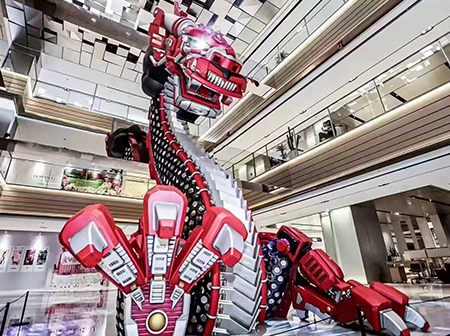
Overcoming the Challenges of 3D Printing for Mechanical Equipment Models
Introduction
3D printing, also known as additive manufacturing, has revolutionized the way mechanical equipment models are designed and produced. It offers unparalleled flexibility, rapid prototyping, and cost-effective solutions for complex geometries. However, despite its advantages, 3D printing for mechanical equipment models presents several challenges, including material limitations, dimensional accuracy, structural integrity, post-processing requirements, and cost considerations.
This article explores these challenges in detail and provides practical solutions to overcome them, ensuring high-quality, functional, and durable mechanical models.
1. Material Limitations
Challenges
One of the primary challenges in 3D printing mechanical equipment models is selecting the right material. Different applications require specific mechanical properties such as strength, heat resistance, flexibility, and durability. Common 3D printing materials like PLA (Polylactic Acid) and ABS (Acrylonitrile Butadiene Styrene) may not always meet the performance requirements for industrial-grade mechanical models.
Additionally, some materials may degrade over time due to environmental factors like UV exposure, moisture, or chemical interactions.
Solutions
- Material Selection: Choose engineering-grade materials such as Nylon, PETG, or Polycarbonate for better strength and durability. For high-temperature applications, consider materials like PEEK (Polyether Ether Ketone) or ULTEM.
- Material Testing: Conduct mechanical testing (tensile strength, impact resistance, thermal stability) before finalizing a material for production.
- Composite Materials: Use fiber-reinforced filaments (carbon fiber, glass fiber) to enhance structural integrity.
- Protective Coatings: Apply UV-resistant or chemical-resistant coatings to improve material longevity.
2. Dimensional Accuracy and Tolerance Issues
Challenges
3D printing processes, especially Fused Deposition Modeling (FDM), can introduce dimensional inaccuracies due to factors like nozzle size, layer adhesion, and thermal shrinkage. Mechanical equipment models often require tight tolerances (within ±0.1 mm), which can be difficult to achieve consistently.
Solutions
- Calibration and Maintenance: Regularly calibrate the 3D printer’s extruder, bed leveling, and motion systems to ensure precision.
- Optimized Print Settings: Adjust layer height, print speed, and infill density to minimize warping and improve accuracy.
- Post-Processing Techniques: Use machining, sanding, or chemical smoothing to refine dimensions.
- High-Resolution Printing: Consider resin-based (SLA/DLP) or industrial-grade SLS (Selective Laser Sintering) printers for finer details.
3. Structural Integrity and Load-Bearing Capacity
Challenges
Mechanical equipment models often need to withstand mechanical loads, vibrations, or repetitive stress. Poor layer adhesion, weak infill structures, and anisotropic properties (weaker in certain directions) can compromise structural integrity.
Solutions
- Optimized Infill Patterns: Use honeycomb or gyroid infill for better strength-to-weight ratio.
- Reinforced Design: Incorporate ribs, gussets, or thicker walls in high-stress areas.
- Annealing or Heat Treatment: Post-process printed parts to enhance layer bonding and mechanical properties.
- Multi-Material Printing: Combine rigid and flexible materials for shock absorption.
4. Post-Processing Requirements
Challenges
3D-printed mechanical models often require extensive post-processing to achieve a smooth finish, remove support structures, or improve functionality. Manual sanding, drilling, or painting can be time-consuming and labor-intensive.
Solutions
- Automated Post-Processing: Use tumbling machines, vapor smoothing (for ABS), or CNC machining for precision finishing.
- Support Optimization: Design models with minimal supports or use dissolvable support materials (e.g., PVA for FDM, wax for SLA).
- Surface Treatments: Apply epoxy coatings or electroplating for enhanced aesthetics and durability.
5. Cost and Scalability
Challenges
While 3D printing is cost-effective for prototyping, scaling up production can be expensive due to material costs, machine time, and labor. Industrial-grade printers and high-performance materials also add to the expense.
Solutions
- Batch Printing: Optimize print layouts to produce multiple parts in a single run.
- Hybrid Manufacturing: Combine 3D printing with traditional machining for cost-efficient mass production.
- Material Recycling: Reuse failed prints or support structures to reduce waste.
- Outsourcing: Partner with professional 3D printing services for large-scale projects.
6. Design Complexity and Software Limitations
Challenges
Designing functional mechanical models requires expertise in CAD (Computer-Aided Design) software. Poorly optimized designs can lead to printing failures, excessive material usage, or weak structures.
Solutions
- Generative Design Tools: Use AI-driven software (e.g., Autodesk Fusion 360) to optimize part geometry for strength and weight.
- Simulation Testing: Run finite element analysis (FEA) to predict stress points before printing.
- Design for Additive Manufacturing (DfAM): Follow guidelines such as avoiding overhangs, using fillets for stress distribution, and hollowing parts to save material.
7. Thermal and Chemical Resistance
Challenges
Mechanical equipment models may be exposed to high temperatures, oils, or corrosive chemicals, leading to material degradation.
Solutions
- High-Temperature Materials: Use PEEK, PEKK, or ceramic-filled filaments for extreme conditions.
- Chemical-Resistant Coatings: Apply PTFE (Teflon) or epoxy coatings to protect against corrosion.
- Sealing Techniques: Use airtight or waterproof sealing methods for models exposed to moisture.
Conclusion
3D printing offers immense potential for creating precise, functional, and cost-effective mechanical equipment models. However, overcoming challenges related to materials, accuracy, structural integrity, post-processing, and scalability is crucial for success. By adopting advanced materials, optimizing designs, leveraging post-processing techniques, and utilizing hybrid manufacturing approaches, engineers and designers can produce high-quality mechanical models that meet industrial standards.
As 3D printing technology continues to evolve, further advancements in materials, software, and printing techniques will help mitigate these challenges, making additive manufacturing an even more powerful tool for mechanical engineering applications.
---
This article provides a comprehensive guide to addressing the key challenges in 3D printing mechanical equipment models while ensuring durability, precision, and cost-efficiency. By implementing these solutions, professionals can maximize the benefits of additive manufacturing in mechanical design and prototyping.
Ce site Web utilise des cookies pour vous garantir la meilleure expérience sur notre site Web.
Commentaire
(0)